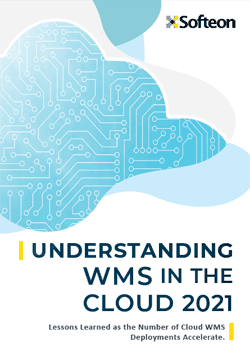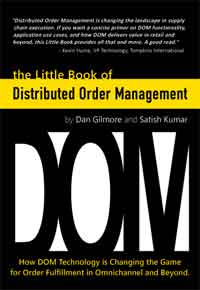Trip Report - Parcel Forum 2021
I am fresh back from the Parcel Forum conference in Washington DC, at the impressive Gaylord hotel at the National Harbor. As usual it took me a couple of days to figure how to navigate the place, which was actually a little easier here than at say the Gaylord properties in Orlando or Dallas. But it's a fun place for an event.
It was early in 2020 since the last time I attended a live event. CSCSMP is also holding its physical conference next week in Atlanta. However, a couple of months back, Garter moved it supply chain conference in November to all virtual, so it's still a mix out there.
I am going to estimate there were 450 or so attendees here at the Parcel Forum - a decent crowd for this boutique event, but I think quite a bit down from the number of the last one in 2019. That even as parcel shipping/efulfillment/last mile delivery are as hot a set of topics as anything we have in logistics right now.
| GILMORE SAYS: |
WHAT DO YOU SAY?'
Dunham said to remain focused - the carriers will often focus on tangential matters to distract from the real core matter of costs.
Send us your
Feedback here
|
More on this soon, but I am not sure we will ever get back to the kind of numbers we saw prior to the pandemic, which even then were trending downwards for most events. It also seems clear that even when fully passed the COVID issue, if that ever happens, most if not nearly all shows will have a virtual component.
What that means for the trade show/conference industry - and especially the trade organizations such as CSCMP and MHI that are so dependent on these events in terms of funding their budgets - remains to be seen.
I went to a number of sessions over two days, and will say each one of them was good (a rarity) with one especially excellent one, which I will get to in a moment. If there was any theme across presentations, it was the fact that parcel shipping demand is simply more than available capacity, at least in peak, and that this has a number of ramifications.
The first and best presentation I saw was on calculating logistics costs at the SKU level, led by Doug Smith, VP of supply chain and logistics of omnichannel retailer Boot Barn, assisted by Shawn Shaw of technology provider Utah Global Transportation Management Solutions.
I'll be honest, I thought we were a little further down the path on this, given all the work done on calculating total landed costs starting 15 years ago or so. But apparently not.
Smith did an excellent job of articulating how the inability to do this SKU-level cost analysis will lead to bad business, merchandising and price decision, and often hidden losses that appear even to CFO as profitable business.
There are several challenges. First is having the data, which combines factory cost data, plus inbound logistics costs, duties and tariffs, distribution costs, and outbound and last mile shipping costs.
If you are lucky enough to have most of the raw data, then comes how you calculate and (critically) allocate those costs to each SKU. Smith warned about the dangers of average costs - even though they are sometimes unavoidable. But apparently some companies take a million dollars of inbound logistics costs across 500,000 units comprised of many SKUs and simply allocate $2.00 for each unit.
Instead of course, you must find some attribute, such as weight or cube or some combination of those, as the basis for assigning costs. Smith noted, for example, that duties and tariffs generally get reported by commodity code, not SKU, and thus have to be translated. Companies must similarly make allocation formulas for the cost of parcel shipping when multiple SKUs or line items are in box.
Smith admitted rough averages were still mostly used to assigned distribution costs per SKU. I will note that it's tricky business to get more granular here, as you may want to measure inbound activities (receiving and putaway), a cost for storage, then outbound picking costst if not more. And that's not easy - but 3PLs do it, often with aid of "billing" software - in order to charge their clients, so it can be done.
 Smith in effect said merchandisers measuring profitability by the traditional metric of gross margin on sales simply doesn't cut it today. He gave some examples - I am not sure whether real or made up, but think closer to real - of how what appeared to be profitable SKUs are actually losing money - in some cases big money - when full logistics costs are applied. Smith in effect said merchandisers measuring profitability by the traditional metric of gross margin on sales simply doesn't cut it today. He gave some examples - I am not sure whether real or made up, but think closer to real - of how what appeared to be profitable SKUs are actually losing money - in some cases big money - when full logistics costs are applied.
He also warned of the dangers of marketplaces in this regard. If you are forced to have the same sell price on your own site and on Amazon, the Amazon sales may look tolerable at the gross margin level, but may not be profitable when logistics costs are applied
Smith also said it may make sense, based on the data, to set some thresholds for merchants. He used an example of saying if a SKU doesn't have at least a 50% gross margin and a sell price of $25, it is unlikely to be profitable. Of course, you need to come up with your own guidelines based on your specifics.
Great presentation by Smith and Shah, whose company's software was used to calculate such costs per SKU at Boot Barn.
My next favorite session was the last one I saw on Thursday morning, on negotiating parcel contracts for 2022, led by John Dunham, CEO of consulting firm Reveel.
Now I have seen numerous presentations on negotiating parcel contracts from various consultants over many years, and they are generally all good, delivered by people (who often once worked for UPS or FedEx) who know what they are talking about.
This was no exception. I'll start by noting that Dunham said that even in this environment, anything can still be negotiated - though obviously with less opportunity than in what used to be normal times. And as all parcel shipping consultants emphasize, it's start with really knowing your shipment profile data. The carriers know your shipping profile - you need to know it better than they do.
Among the many tips: don't focus on getting to a lower average rate - negotiate on the services where you are really spending the most money. And you really have to be willing to move the business in part or whole to other carriers - if you aren't really positioned to do this, your current carrier will know it. Can you really become "carrier agnostic?"
Of course, if you have a single carrier strategy and look to move to a multi-carrier one, you will fall into lower discount brackets with the incumbent carier due to a drop in spend. I asked Dunham how often and when the loss of discount with the current carrier can be offset by the greater discounts from a new carrier or carriers.
He said first, even if the business with the incumbent is cut in half, that remaining business can often be favorably negotiated to reduce the impact, especially if some of the freight being moved is not particularly attractive to the incumbent. He added that in a high percent of cases, total savings are achieved - if you are set up to really support such a change in strategy.
Dunham said to remain focused - the carriers will often bring up tangential matters to distract from the real core matter of costs. He also noted that so-called "peak" surcharges are a separate issue from core rates and other surcharges (e.g., rural delivery) and need to be negotiated separately. Capacity commitments are of course today especially critical.
Running out of space, Jeff McDermott of 3PL Geodis delivered a solid presentation on avoiding issues with carriers and a company's own execution of a multi-carrier strategy.
Among the key tips: get you master data right in term of dimensions, weight, bulky or not, etc. Otherwise, what you expect the costs to be will prove inaccurate.
McDermott also said that for many large parcel shipments, LTL shipping is increasingly a cost effective alternative. He also noted if you are moving to a multi-carrier strategy for the first time, be sure to give yourself enough time to be successful - and make sure you pay close attention to the now changing processes (e.g., sortation) in the distribution center and the IT readiness needed to make it work.
McDermott early on noted that "For the first time in history, parcel carriers are walking away from business," a very odd scenario indeed.
As usual, a good job by the parcel forum - it's a interesting event covering a topic of increasing importance to many companies and even the economy as a whole.
I will be at CSCMP Edge in Atlanta next week. Hope to see you there.
Any reaction to this Parcel Forum 2021 review? Let us know your thoughts at the Feedback button or section below.
|









 Smith in effect said merchandisers measuring profitability by the traditional metric of gross margin on sales simply doesn't cut it today. He gave some examples - I am not sure whether real or made up, but think closer to real - of how what appeared to be profitable SKUs are actually losing money - in some cases big money - when full logistics costs are applied.
Smith in effect said merchandisers measuring profitability by the traditional metric of gross margin on sales simply doesn't cut it today. He gave some examples - I am not sure whether real or made up, but think closer to real - of how what appeared to be profitable SKUs are actually losing money - in some cases big money - when full logistics costs are applied. 


